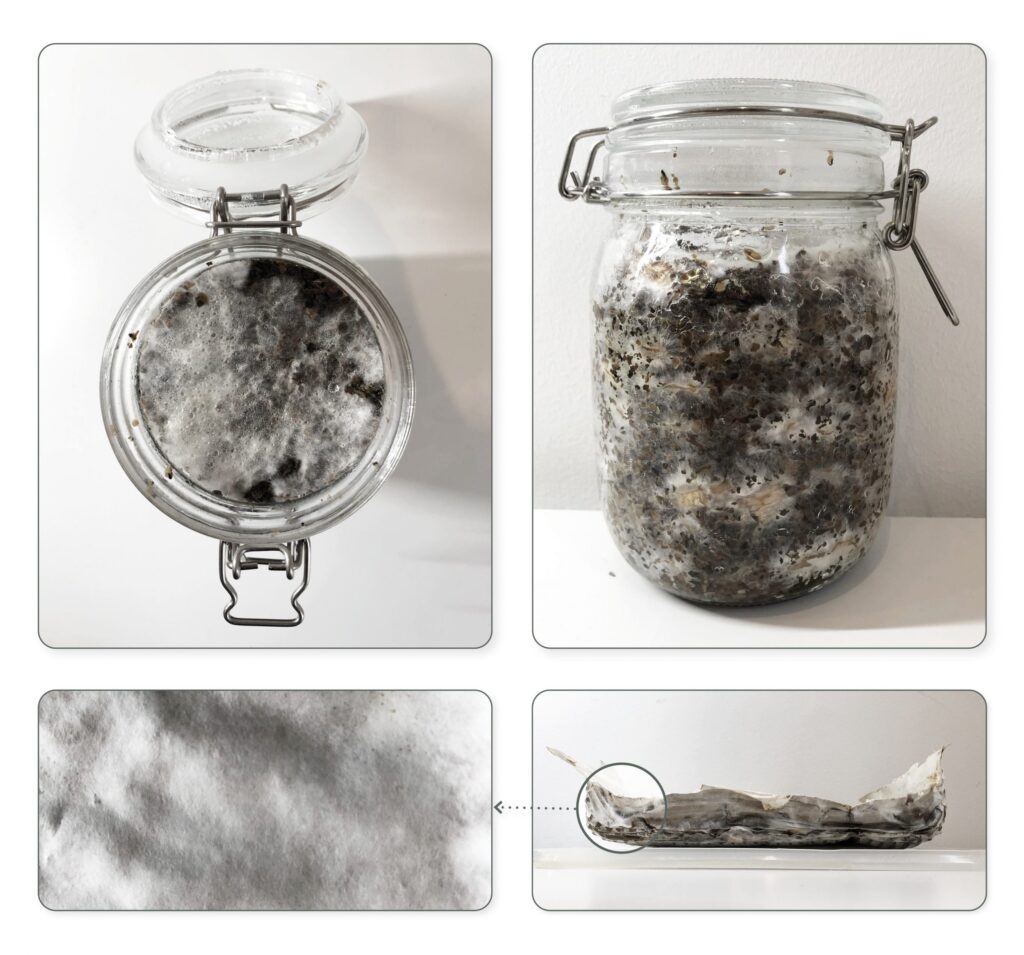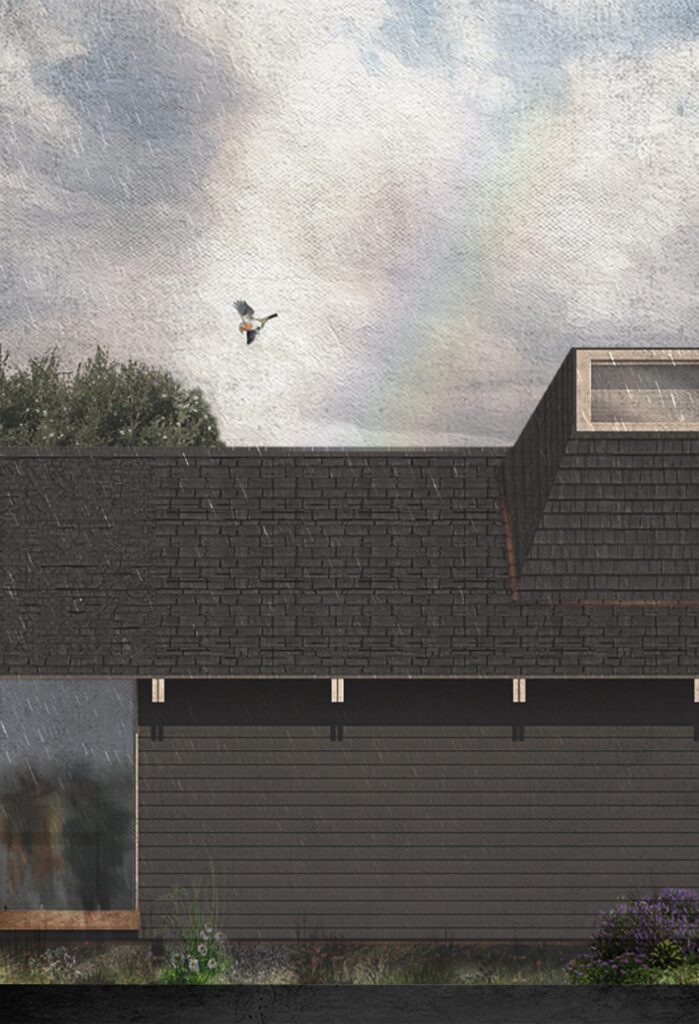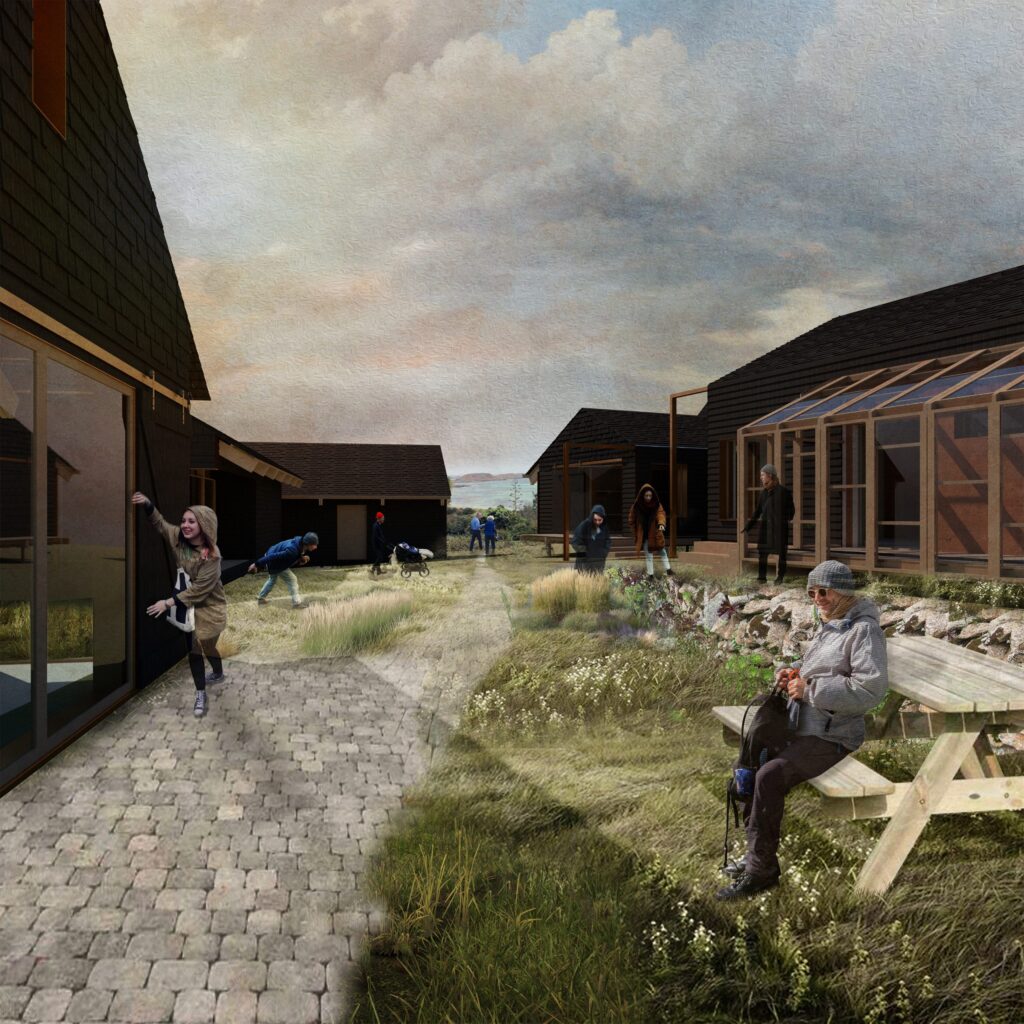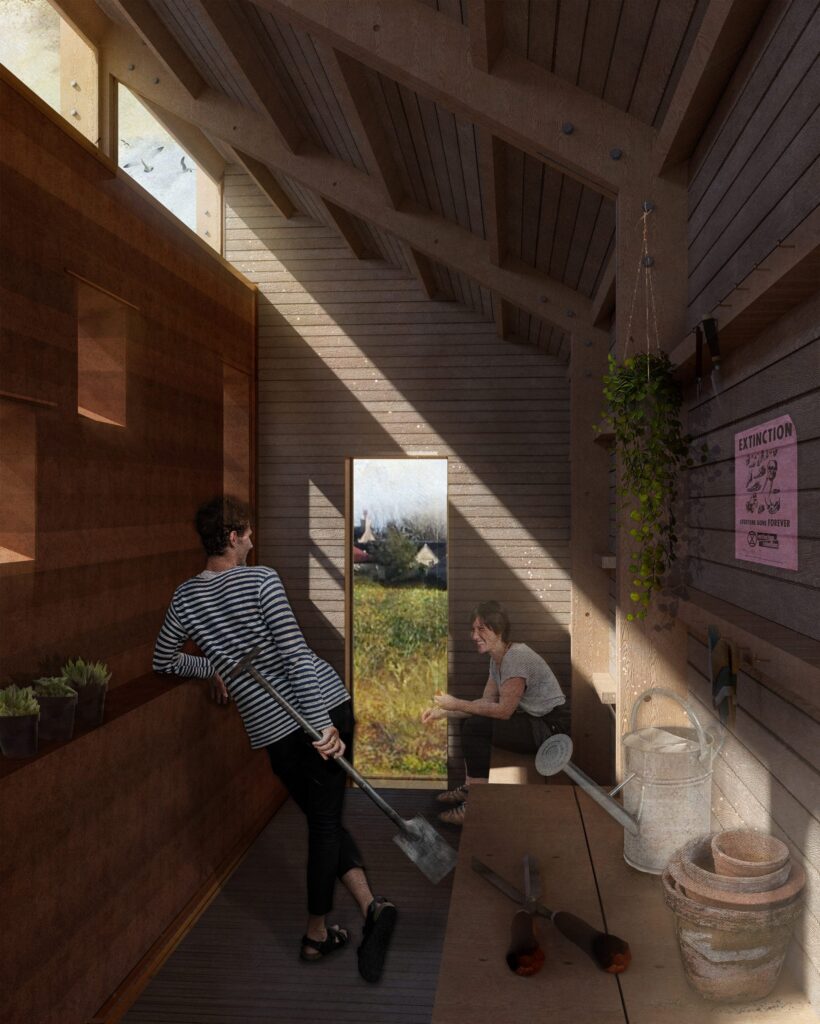“The Ginnick: Mobilising the Carbon Army“
The Carbon Army has been mobilised to bring an end to the Isles of Scilly’s cycle of social isolation and fuel poverty. Through the introduction of a closed loop system which uses waste from the brewing process to grow mycelium insulation, this thesis reinstates the island’s social pub culture, whilst upskilling a Carbon Army of islanders to retrofit existing building stock. It becomes a model of resilience and self-sufficiency for all island communities in the face of climate change.
The project looks at regenerative design strategies to reduce embodied and operational carbon, as well as being constructed solely from healthy building materials, to create an architecture which actively improves the health of its inhabitants as well as increasing biodiversity around the site.
The thesis also explores Jan Gehl’s Life Between Buildings and Kenneth Frampton’s Critical Regionalism to create an architecture which is rooted in the Scillonian vernacular and promotes a holistic social infrastructure on the islands.
Encapsulating the materiality and sense of place on the Isles of Scilly, this thesis provides a solution which not only solves fuel poverty and social isolation on the islands, but forms a benchmark for truly sustainable architecture in all threatened island communities.
Mycelium Insulation – an exploration into mycelium as a bio-based insulative board, using corrugated cardboard and spent grains as test substrates.
Life Between Buildings – the promotion of social interaction between the buildings, through soft edges and landscaping, to increase time spent outdoors in nature, with each other.
Critical Regionalism – heavy analysis into the vernacular at micro and macro scale on the islands has developed an architecture rooted in place, without creating a pastiche.
Rammed Earth – Local materials with low embodied carbon has been key to this scheme, so rammed earth walls rise through the spaces to introduce thermal mass and biophilia.
CONTACT EMAIL: roseburgoyne@hotmail.co.uk
LINKEDIN: https://www.linkedin.com/in/roseburgoyne/
Curated by Laura Selwood




